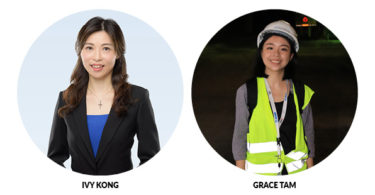Mary Chan is an assistant director and the head of Sustainable Building Research at Dennis Lau & Ng Chun Man Architects & Engineers (HK) Ltd (DLN). She joined the company in 1980 and over the years led major architectural projects locally and overseas, including the multi-award winning large-scale residential project Double Cove in Hong Kong, Hong Kong Convention and Exhibition Centre, Singapore’s Suntec City Development and several school projects in Canada.
 Bringing with her a wealth of experience and knowledge of the architecture industry, Chan is instrumental to DLN’s Sustainable Building Research. Her expertise was employed for leading a team of consultants for the development of the Hong Kong Green Shop Guide for Hong Kong Green Building Council (HKGBC) in 2012-2014. Currently, she is developing the Hong Kong Green Office Guide for HKGBC with a team of consultants. She is also overseeing private residential projects as well as public housing and subsidised sales flat development projects in Hong Kong.
Bringing with her a wealth of experience and knowledge of the architecture industry, Chan is instrumental to DLN’s Sustainable Building Research. Her expertise was employed for leading a team of consultants for the development of the Hong Kong Green Shop Guide for Hong Kong Green Building Council (HKGBC) in 2012-2014. Currently, she is developing the Hong Kong Green Office Guide for HKGBC with a team of consultants. She is also overseeing private residential projects as well as public housing and subsidised sales flat development projects in Hong Kong.
Chan also dedicates her time to public service. She serves as the director of HKGBC; chairman of the HKGBC’s Public Education Committee; council member of the Hong Kong Institute of Architects (HKIA), member of the board of local affairs of HKIA, and member of the environment and sustainable development committee of HKIA. She is a BEAM professional, LEED accredited professional, GBL manager, and a member of the Committee of Experts on Green Building Assessment of the Chinese Society for Urban Studies.
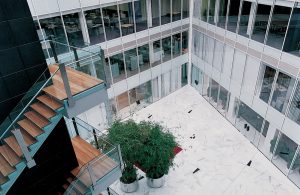
What are the main objectives of publishing the Hong Kong Green Shop Guide and Hong Kong Green Office Guide?
The main objective of the Hong Kong Green Shop Guide is to provide practical guidance to owners, facility managers and tenants of shopping malls and retail shops on the implementation of Green measures at their buildings and facilities. The guide also aims to inculcate Green shopping habits in the community and enhance the public’s awareness and appreciation of the Green measures adopted by shopping malls and shops.
On the other hand, the Hong Kong Green Office Guide’s main objective is to inform building owners, property and facility managers, and tenants and occupants of office premises, of the constraints, opportunities and benefits arising from energy and environmental improvements to the building and office facilities, and how these potential benefits can best be realised.
HKGBC is a non-profit, member-led organisation established in 2009 with the vision to aspire for quality and sustainability at every stage of the building life cycle and embrace these principles as a mark of excellence. It engages the government, industry and community to create practical solutions for Hong Kong’s unique, subtropical built environment. Its mission is to lead the market transformation to a sustainable built environment in Hong Kong by guiding the development of industry standards, best practices, education and research in Green building.
Both guides help promote Green building development, renovation, operation and maintenance of buildings, as well as user behaviour.
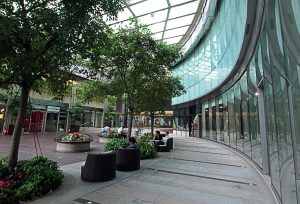
Many developers and shop owners assume that a Green building or shop is going to cost more money, have you found this to be the case? Is it true that an environmentally friendly office is only related to the adoption of advanced technology? Please share other aspects that also need to be considered.
There are many different ways to introduce Green and sustainable measures to shopping mall buildings and shop units. Some of the measures may involve higher costs, while others may involve less or no additional cost.
Investing on an equipment to achieve higher energy efficiency may be costly, but the long-term cost savings in terms of lower energy consumption will offset the initial cost. Payback period varies for different types of equipment.
Passive design and climate-responsive principles can be incorporated to achieve environmental objectives at lower or no cost. For example, installing a large glass window on the north side of a building results to less solar radiation compared to placing the same glass window on the west side, since light from the north is cooler. Less solar radiation means the cooling load of the air conditioning system is reduced, hence saving energy without additional building cost.
Colour choice of interior finishes is also an important factor in sustainable design. Dark colour themes inside shopping malls and shops require more light to brighten up the interior, which results in higher energy consumption and electricity cost. In contrast, light colour interior finishes help reflect light inside the shopping mall and shops, therefore achieving a similar degree of brightness without using as much artificial lighting. This results in lower energy consumption and electricity cost.
Improving indoor air quality can also be achieved by careful use of interior finishes that have no or low volatile organic compound. This minimises emissions from the finishing materials and helps to create a healthier interior environment within shopping malls, shops and offices.
Human behaviour, operation and management all play important roles in achieving the Green objectives of any building premise. Regardless of how well a building was built and designed, if it is not operated and managed in a sustainable way, the benefits of Green building measures will not be fully achieved. Shoppers and workers in shopping malls, as well as occupants of offices, can also contribute to the success of the environmental objective of Green buildings and interior environmental quality. Setting indoor air conditioning temperature at moderate level—rather than very low—helps reduce energy consumption and avoid over-cooling interior spaces.
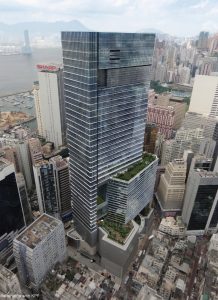
What are the major differences between current BEAM Plus assessment tools and the Hong Kong Green Shop/Office Guide? Are they substitute or complementary to each other?
BEAM Plus assessment tool is a Green building assessment and rating tool used in Hong Kong which sets targets and standards that are assessed for specific aspects of Green buildings. The current Hong Kong Green Shop Guide and the future Hong Kong Green Office Guide are guide books that provide information to help stakeholders implement Green measures. One of the strategies can be getting the building or premise assessed through the BEAM Plus assessment tool.
What are the incentives for tenants and shoppers to go Green? How do the guide books help to promote Green building and shops in Hong Kong?
Tenants of shopping malls and office premises will realise that adopting energy saving measures, either through passive design measures or using more energy-efficient equipment, will help them reduce electricity cost. This will be the greatest incentive for them to go Green.
Shoppers and office occupants will also realise that going Green is a more sustainable lifestyle. Interior spaces that are designed to achieve Green targets in terms of indoor environmental quality provide a healthier indoor environment for shoppers and office occupants. Health and well-being will be the greatest incentive for them to go Green.
Can you give some examples of shops or offices that follow the guides, and how the guides help them consume less energy and have less impact on the environment?
The Hong Kong Green Shop Guide has included many case studies of shopping malls and shops. Readers can learn from the many examples of Green strategies that have already been used and proven effective. Hysan Place in Causeway Bay is one of the case studies. This shopping mall has been awarded the LEED CS Platinum rating and BEAM Plus NB Platinum rating.
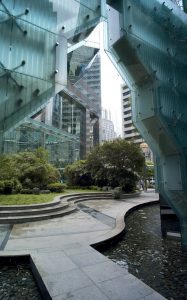
What are the main challenges for Green building development in Hong Kong? What should the government do to overcome these challenges?
There is a misconception that Green buildings are more costly to build. This fear of higher costs is hindering clients and those in the construction industry to pursue Green buildings. The importance of incorporating passive designs and relying less on expensive equipment needs better understanding from everyone. We, as architects, can offer our expertise from the start of any building project to create sustainable buildings.
Under current building regulations, designs with high headroom to enhance natural ventilation or feature extensive overhangs to provide better weather protection from the rain and better shading from the sun are often not exempted from gross floor area calculation. This is sometimes very discouraging for architects who wish to think outside the box. Building regulations should be reviewed to adopt a more flexible approach in assessing Green and innovative design. A review panel comprising professionals from various disciplines and representatives from various government departments is needed to review building designs in a holistic way. We all need to work together to encourage and support the advancement of Green and innovative design in Hong Kong.

 Malaysia
Malaysia Singapore
Singapore Indonesia
Indonesia Tiếng Việt
Tiếng Việt ประเทศไทย
ประเทศไทย







